Spotlight on Coffee Farm Birds
Coffee farms aren't just about producing the world's favorite morning beverage. They are also home to a unique and vibrant community of bird species. In many regions, these farms form an integral part of the ecosystem, providing habitat and sustenance to various avian inhabitants.
By choosing Smithsonian Bird-Friendly coffee, you are not only indulging in a delicious cup but also contributing to the protection of these beautiful creatures. The certification ensures that the farms maintain bird habitats and follow sustainable practices that are crucial to bird conservation.
Join us as we explore the fascinating world of birds that live in and around coffee farms. In this guide, you'll discover interesting information about each bird's habitat, migration patterns, foraging behavior, ecological role, and other unique traits.
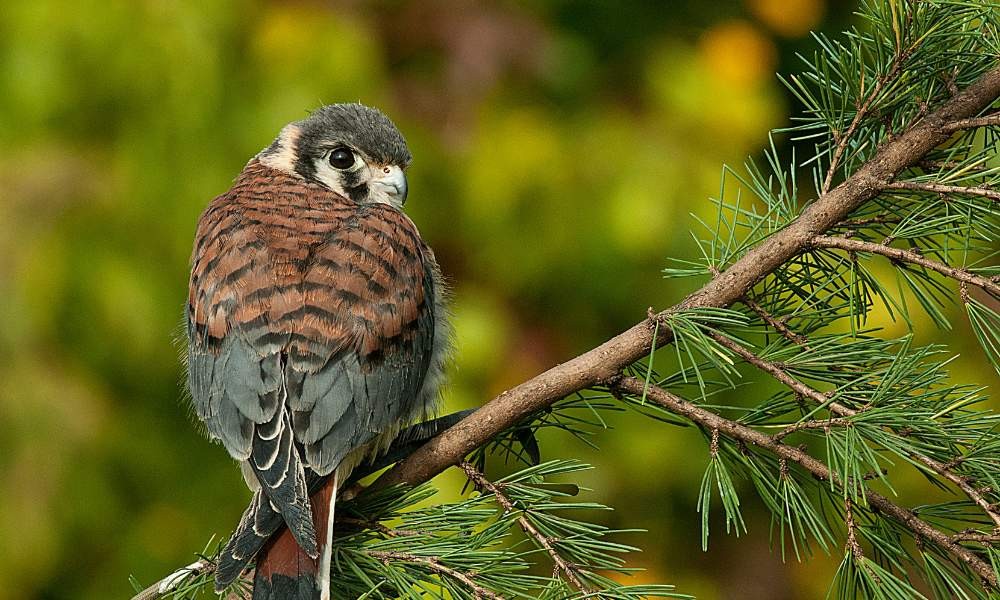
Meet the American Kestrel!
Hey, coffee lovers and bird enthusiasts! Allow me to introduce you to one of the most dazzling residents of coffee farms - the American Kestrel. Not only is this bird a treat for the eyes, but it's also a vital part of the ecosystem where your favorite brew comes from. Let's get to know this feathery friend!
Habitat and Migration
The American Kestrel's migration range is from Alaska down through to Chile and is often spotted on coffee farms in Guatemala, Colombia, and Peru. These agile raptors can be spotted hunting over the coffee farms, making them an essential part of the landscape. Bird-friendly coffee cultivation in these areas helps protect this magnificent species, a wonderful thought to savor with your next cup.
Foraging Behavior
Imagine you're a bug in a coffee farm. Suddenly, a shadow looms overhead, and before you know it, a Kestrel swoops down and nabs you for lunch! They've got an appetite for insects, small mammals, and birds, and they don't mind putting on an acrobatic show as they hover and hunt.
Ecological Role
"But what's a Kestrel doing in a coffee farm?" you might ask. Great question! These birds are like nature's pest control, keeping those pesky insects and rodents in check. They're the winged guardians of the coffee plants, making sure everything stays balanced.
Interesting Facts
The American Kestrel is no ordinary bird. Males sport blue-gray wings while females rock brown ones. They're the tiniest falcons in North America but don't let their size fool you; they've got personality!
Ever seen a bird bob its head like it's jamming to its favorite tune? That's the Kestrel for you. And their ability to hover in one spot while hunting? Pure talent!
Sadly, the American Kestral population continues to decline. But that's where bird-friendly coffee comes in! By sipping on a cup that supports natural habitats, you're giving a high-five to these amazing birds.
So next time you're enjoying a cup of joe, remember the American Kestrel. These incredible birds might be nearby, dancing in the air, and playing a vital role in bringing you that delightful coffee flavor. Cheers to the Kestrel!
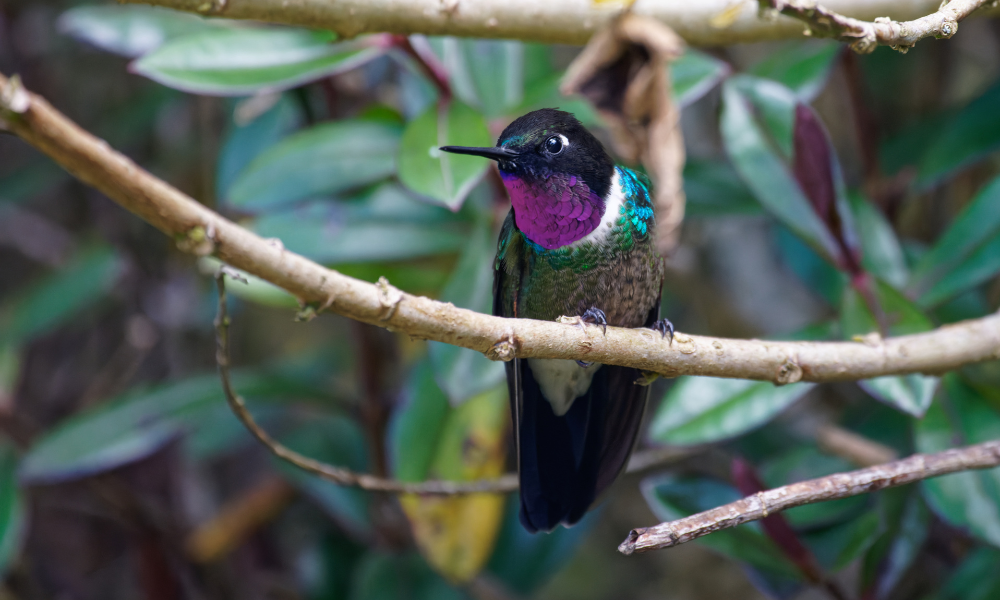
Meet the Amethyst-throated Sunangel!
Grab your favorite mug of bird-friendly coffee, dear friends, and prepare to be dazzled by the Amethyst-throated Sunangel! With a name as poetic as its appearance, this little gem sparkles in the world of coffee farms. Let's take a whimsical journey to learn about this delightful hummingbird.
Habitat and Migration
Nestled in the cloud forests and highland areas, often near your beloved coffee farms, the Amethyst-throated Sunangel finds its home. These birds prefer the lush landscapes of South America, gracing countries like Peru and Bolivia with their presence. No lengthy migrations for this Sunangel - they adore their habitat year-round.
Foraging Behavior
Speaking of adoration, ever seen a hummingbird dancing with a flower? The Sunangel does just that as it flits and sips nectar with its specially adapted bill. It's like a beautiful ballet with the blossoms, with an occasional insect thrown in for a little protein snack. Nature's theater at its best!
Ecological Role
Oh, the Sunangel is more than just a pretty face. This bird's appetite for nectar is like a sweet kiss to the flowers, aiding in pollination as it goes. Imagine it as a matchmaker between flowers, helping them find their perfect pair. Meanwhile, it keeps those pesky insects in check. Quite the ecological cupid!
Interesting Facts
Hold onto your coffee mugs; the Amethyst-throated Sunangel has some sparkle to share! Males sport a breathtaking amethyst-colored throat, living up to their enchanting name. Their wings beat at an astonishing speed, leaving trails of glittering light as they dance through the air.
But wait, there's more magic! These birds are known to be territorial, so if you ever catch sight of two males in a dazzling duel, you've just witnessed a Sunangel showdown. How's that for drama?
Sip and Support
Feeling enchanted by the Amethyst-throated Sunangel? We bet you are! And here's something lovely: every cup of bird-friendly coffee you enjoy helps protect their sparkling habitat. So, the next time you sip, think of these winged wonders and the beautiful ballet they perform near the very farms that fuel your day.
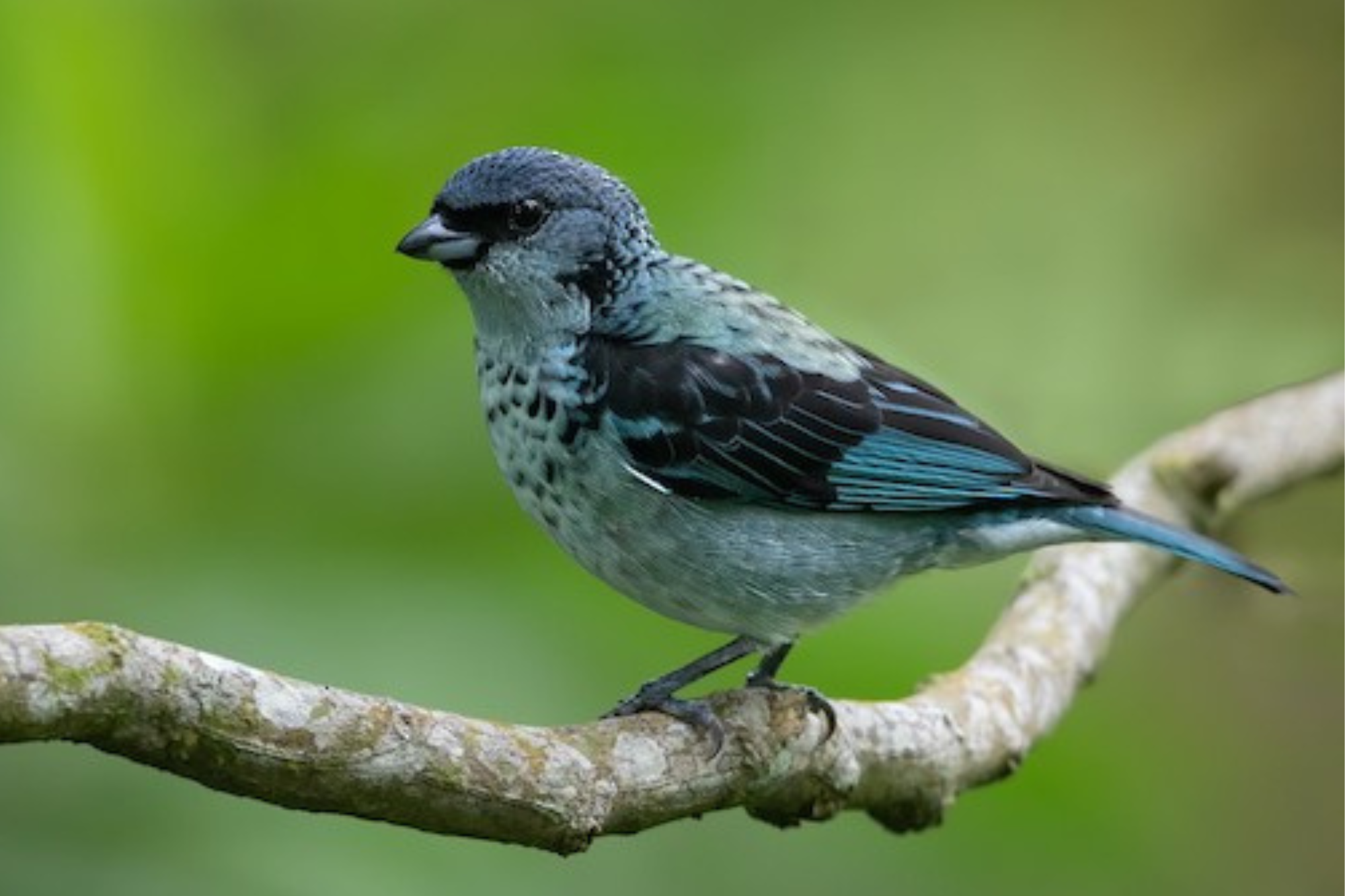
Meet the Azure-rumped Tanager!
Pour yourself a fresh cup of Java Planet coffee and get ready to embark on a journey with the Azure-rumped Tanager. This medium-sized bird, with its striking pale blue face and purplish-blue crown, is one of the many avian wonders that thrive in our bird-friendly coffee farms. Let's dive deeper into the world of this fascinating bird.
Habitat and Breeding Season
The Azure-rumped Tanager is a resident of coffee farms, particularly those in Guatemala. These birds are most active during the wet season, from April to September, when food is abundant. It's during this period that they engage in breeding activities. Pairs separate from flocks and are typically seen in pairs or small family groups. Their nests, cup-shaped and well-concealed, are carefully placed on trees, ensuring the safety of their young.
Foraging Behavior and Vocalizations
Azure-rumped Tanagers are quite the chatterboxes! They typically call out as they move from tree to tree, making them quite noisy – a characteristic that has been helpful for bird enthusiasts trying to locate them. Their diet mainly consists of fruits and insects found around the coffee farms.
Ecological Role and Cooperative Breeding
These birds play a significant role in the ecosystem of coffee farms. Not only do they help in controlling pests, but they also engage in cooperative breeding. This means that adults other than the parents assist with the raising of the young, showcasing a strong sense of community and teamwork among these birds.
Interesting Facts
The Azure-rumped Tanager is truly a sight to behold. Both males and females sport the same beautiful colors, with a black "masked" appearance around the eyes. Their breeding season is quite specific, with nesting usually taking place between mid-April to mid-June. The average clutch consists of two eggs, which are incubated for about 14 days. By the time they are 15 days old, the chicks are ready to leave the nest and explore the world.
Sip and Support
Every cup of Java Planet coffee you enjoy contributes to the conservation of birds like the Azure-rumped Tanager. By supporting bird-friendly coffee practices, you're ensuring that these beautiful creatures continue to thrive in their natural habitat. So, the next time you take a sip, remember the Azure-rumped Tanager and the vibrant world it represents.
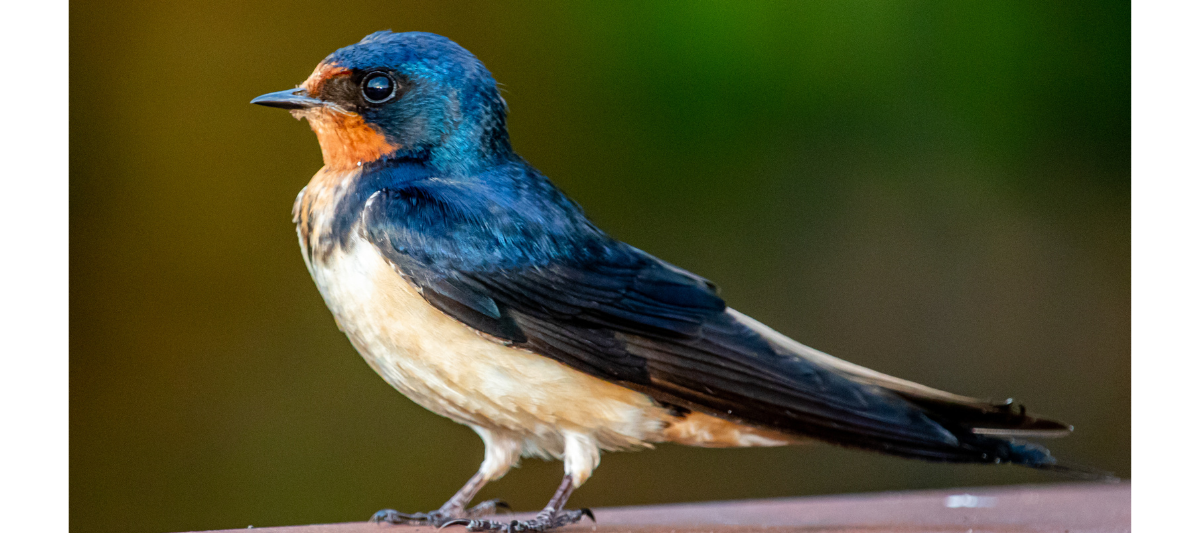
Meet the Barn Swallow!
As you savor your cup of Java Planet coffee, let's take a moment to appreciate the Barn Swallow, a graceful and agile bird that often graces the skies above coffee farms. With its sleek, aerodynamic body and a tail that streams behind it like ribbons, the Barn Swallow is a sight to behold. Let's dive into the captivating world of this avian acrobat.
Habitat and Migration
The Barn Swallow is a true traveler at heart. Found in almost every part of the world, these birds migrate long distances, covering continents to find the perfect breeding and feeding grounds. Coffee farms, with their open landscapes and abundance of insects, provide an ideal stopover for these birds during their migratory journeys.
Foraging Behavior
Watch a Barn Swallow in action, and you'll be mesmerized by its aerial acrobatics. Darting and diving through the air, these birds are expert insect catchers. Their diet primarily consists of flying insects, which they skillfully catch mid-flight. So, as you enjoy your coffee, these birds are hard at work, keeping the insect population in check.
Ecological Role
Beyond their beauty and grace, Barn Swallows play a crucial ecological role. By feeding on insects, they help maintain a balance in the ecosystem, ensuring that no single insect species becomes too dominant. Additionally, their mud nests, often built on man-made structures, are a testament to their adaptability and resilience.
Interesting Facts
The Barn Swallow's deep blue upperparts and cinnamon-colored underparts make it easily recognizable. But did you know that they're also known for their melodious songs? Their cheerful chirps and trills add a musical note to the ambiance of coffee farms.
Another fascinating fact is their strong sense of community. Barn Swallows often form large flocks, especially during migration, creating a breathtaking spectacle as they dance across the sky in perfect harmony.
Sip and Reflect
Every time you sip on your Java Planet coffee, take a moment to think of the Barn Swallow. These birds, with their beauty and ecological importance, remind us of the intricate web of life that surrounds us. By choosing bird-friendly coffee, you're playing a part in ensuring that birds like the Barn Swallow continue to grace our skies.
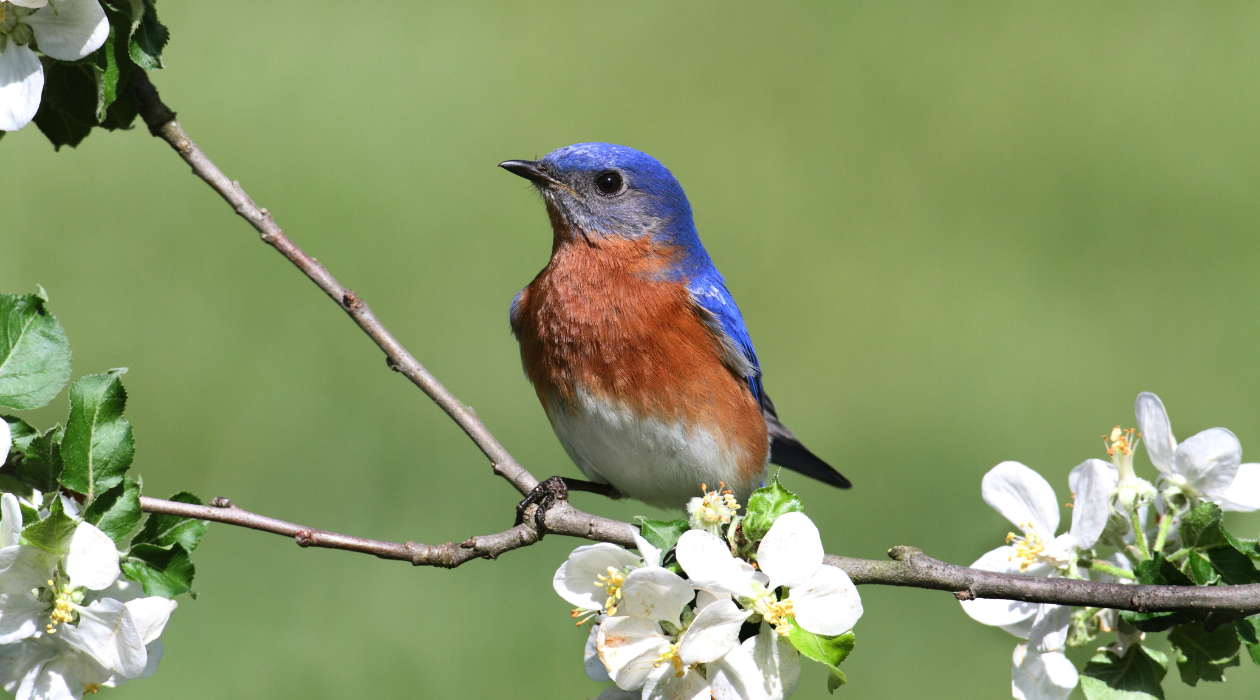
Meet the Eastern Bluebird!
As you enjoy the rich flavors of your Java Planet coffee, let's turn our attention to a charming and beloved visitor of our coffee farms – the Eastern Bluebird. This small thrush, with its vibrant blue plumage and rust-colored chest, is a symbol of happiness and beauty in the avian world. Let's delve into the life of this delightful bird.
Habitat and Behavior
The Eastern Bluebird, a native to North America, is often found perched on fences and wires near open fields, which makes coffee farms an ideal habitat for them. These birds are cavity nesters, often taking up residence in old woodpecker holes or nest boxes, adding a touch of homeliness to the farm landscape.
Diet and Foraging
Eastern Bluebirds have a diverse diet, feeding on a mix of insects and fruits. They can often be seen diving to the ground to catch insects or perched on branches, eyeing berries. Their presence in coffee farms plays a crucial role in controlling insect populations, making them natural allies to coffee farmers.
The Joyful Songster
One of the most endearing qualities of the Eastern Bluebird is its song. Their melodious and flute-like warbles are a joy to hear, especially during the early morning hours. The sound of their singing, combined with the aroma of fresh coffee, creates a serene and uplifting atmosphere on the farm.
Conservation and Significance
The Eastern Bluebird, once facing declining numbers, has made a remarkable comeback, thanks in part to conservation efforts and the installation of nest boxes. Their resurgence is a heartening example of how human intervention can positively impact wildlife.
A Symbol of Coffee Farm Harmony
The Eastern Bluebird is more than just a beautiful bird; it symbolizes the harmony between nature and sustainable coffee farming practices. Their thriving presence on our farms is a testament to the importance of maintaining a healthy and balanced ecosystem.
As you sip your Java Planet coffee, take a moment to appreciate the Eastern Bluebird and the vital role it plays in the natural world. Each cup you enjoy contributes to the preservation of these delightful birds and the beautiful habitats they inhabit.
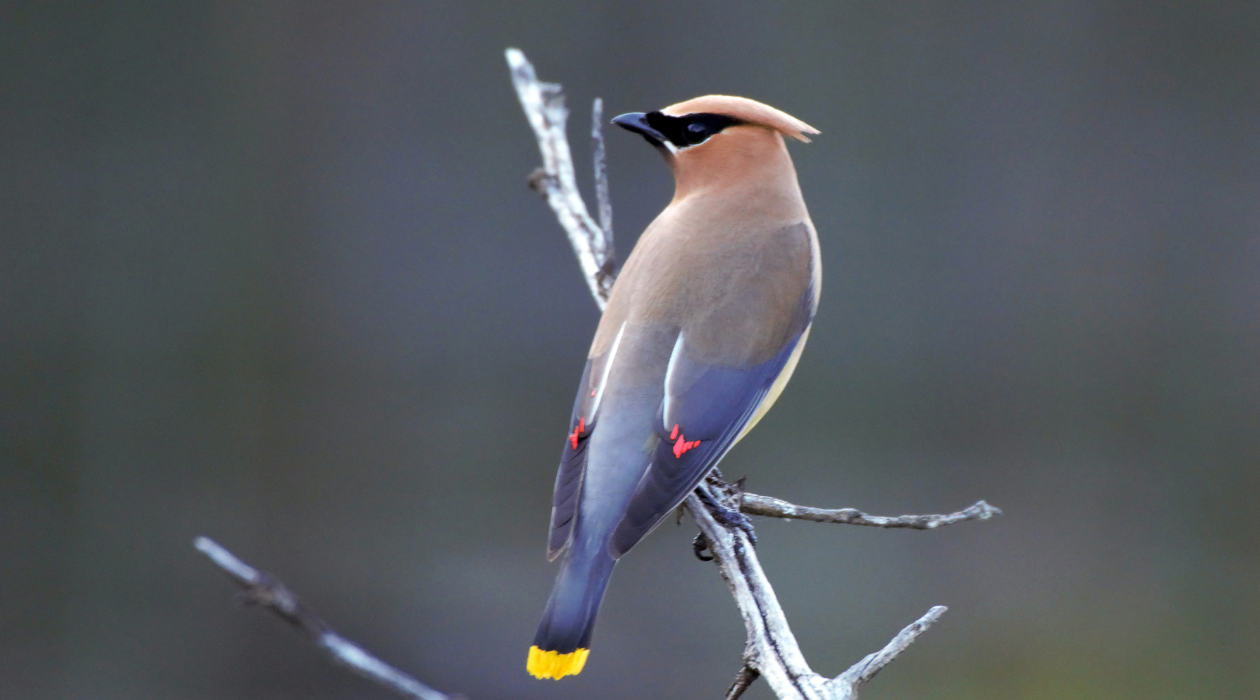
Meet the Cedar Waxwing!
As you relish the rich, aromatic flavors of your Java Planet coffee, let's take a moment to appreciate a striking visitor to our coffee farms – the Cedar Waxwing. This sleek bird, with its distinctive mask and brilliant plumage, is a symbol of elegance and mystery in the bird world. Join us as we explore the captivating world of the Cedar Waxwing.
Habitat and Behavior
The Cedar Waxwing, known for its nomadic lifestyle, is often found in flocks, traveling across various landscapes in search of food. These birds are particularly drawn to areas with abundant fruit, making our coffee farms, with their diverse flora, an ideal habitat for them. Their social nature adds a lively dynamic to the farm environment.
Diet and Foraging
Cedar Waxwings are primarily frugivores, with a strong preference for berries. They can often be seen perched in groups, delicately plucking berries from bushes or trees. Their presence is beneficial to the farms, as they help in seed dispersal, contributing to the biodiversity of the ecosystem.
Distinctive Appearance
One of the most striking features of the Cedar Waxwing is its appearance. With a sleek, brown body, black mask, and a hint of bright yellow at the tail, they are easily one of the most photogenic birds on coffee farms. The red, waxy tips on their wing feathers, from which they get their name, add to their unique charm.
The Gentle Songster
Unlike many songbirds, Cedar Waxwings are not known for loud or complex songs. Instead, they communicate with soft, high-pitched calls, adding a subtle yet enchanting layer of sound to the coffee farm ambiance.
A Symbol of Sustainable Harmony
The Cedar Waxwing is more than just a beautiful bird; it symbolizes the harmony between nature and sustainable coffee farming practices. Their presence on our farms is a testament to the importance of maintaining a healthy and balanced ecosystem for all creatures.
As you sip your Java Planet coffee, take a moment to appreciate the Cedar Waxwing and the vital role it plays in the natural world. Each cup you enjoy contributes to the preservation of these elegant birds and the beautiful habitats they inhabit.
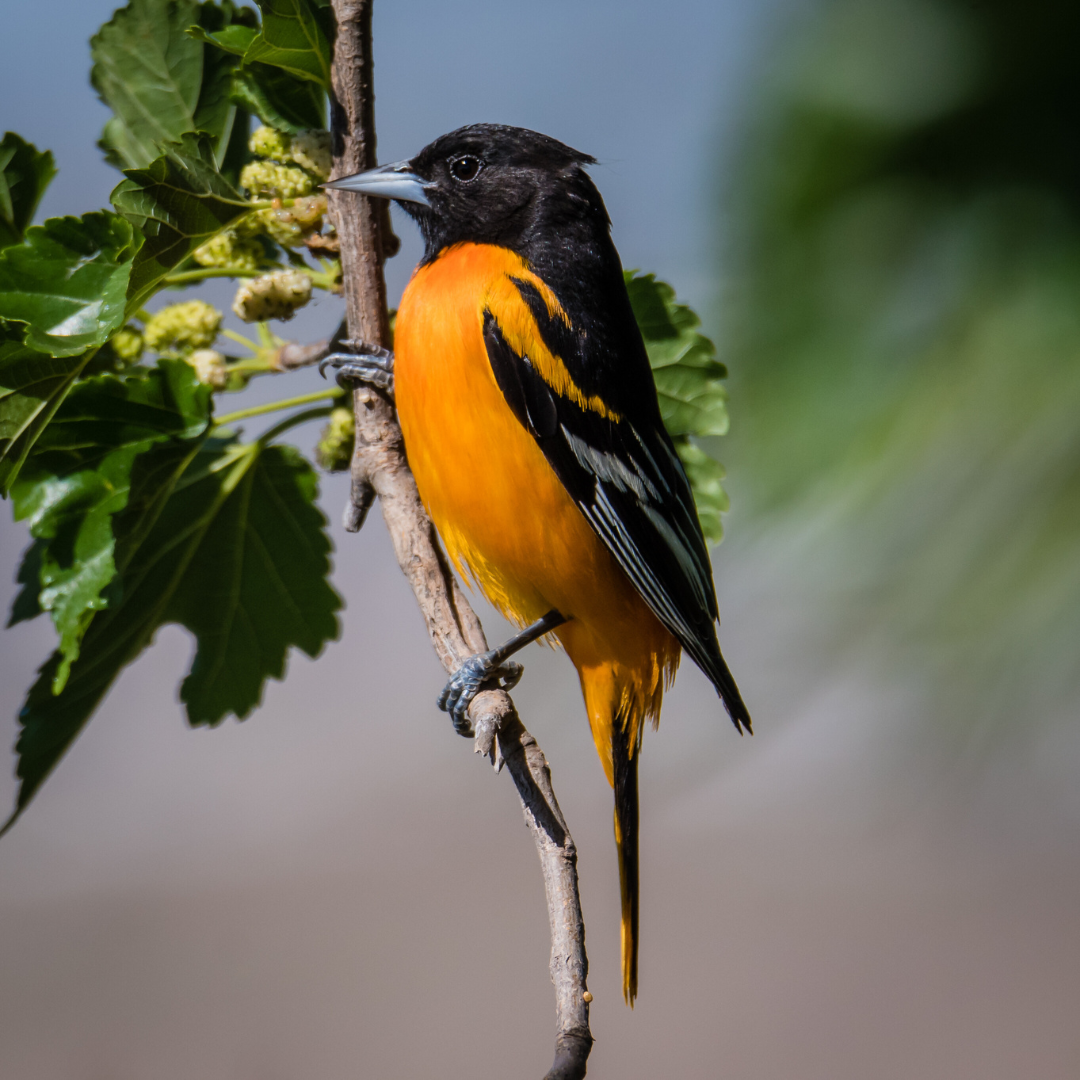
Meet the Baltimore Oriole!
As you savor the deep, rich notes of your Java Planet coffee, let's turn our gaze to a vibrant and melodious visitor of our coffee farms – the Baltimore Oriole. This striking bird, with its brilliant orange and black plumage, is a beacon of color and song in the avian world. Join us as we delve into the captivating life of the Baltimore Oriole, a frequent visitor to our bird-friendly certified farms in Colombia and Guatemala.
Habitat, Migration, and Coffee Farms
The Baltimore Oriole is a migratory bird that travels great distances between North and Central America. These birds are particularly drawn to open areas with tall trees, making coffee farms, including those in Colombia and Guatemala from which we source our coffee, an ideal habitat. Their presence on these bird-friendly certified farms is a testament to our commitment to maintaining diverse and healthy ecosystems.
Diet and Foraging Habits
Baltimore Orioles have a varied diet, including insects, fruits, and nectar. They are particularly fond of ripe, juicy fruits, which they skillfully forage from trees and bushes. Their feeding habits play a crucial role in controlling insect populations and aiding in the pollination of flowers, making them valuable contributors to the farm's biodiversity.
The Oriole's Song
One of the most enchanting aspects of the Baltimore Oriole is its song. Their rich, whistling tunes are a delight to the ears, adding a layer of auditory beauty to the coffee farm environment. The male's song, used to attract mates and defend territory, is particularly melodious and varied. You can listen to their calls here.
Conservation and Significance
The Baltimore Oriole is not only a joy to behold but also an important indicator of environmental health. Their presence on our bird-friendly coffee farms in Colombia and Guatemala signifies a balanced and thriving ecosystem. By choosing bird-friendly coffee, you're helping to ensure that these beautiful birds continue to flourish.
A Symbol of Coffee Farm Vibrancy
The Baltimore Oriole is more than just a beautiful bird; it symbolizes the vibrant interplay between nature and sustainable coffee farming. Their thriving presence on our farms is a reminder of the beauty and diversity that sustainable practices can foster.
As you enjoy your Java Planet coffee, take a moment to appreciate the Baltimore Oriole and the vital role it plays in the natural world. Each cup you drink contributes to the preservation of these magnificent birds and the beautiful habitats they call home.
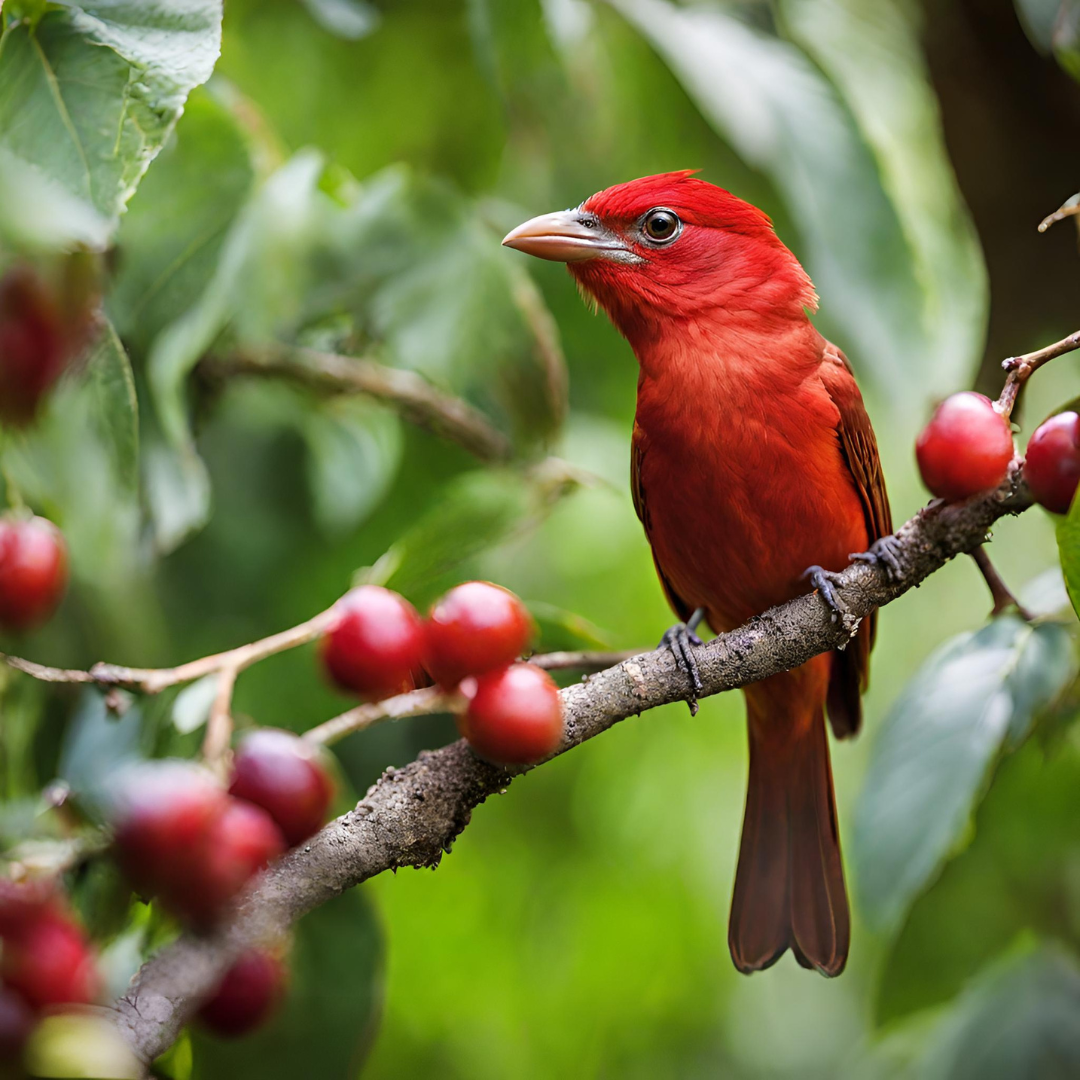
Meet the Summer Tanager!
As you indulge in the smooth, fruity notes of your Java Planet coffee, let's introduce you to a radiant guest of our coffee farms – the Summer Tanager. This exquisite bird, with its striking red or yellow (for females) plumage, stands out as a vibrant spectacle among the lush greenery. Explore the enthralling life of the Summer Tanager, a cherished visitor to our bird-friendly certified farms in Colombia, Guatemala and Peru.
Habitat, Migration, and Coffee Farms
The Summer Tanager is a migratory species that spends its breeding season in the United States, from northern Florida up to southern New Jersey, westward to central Texas and up through parts of Missouri, southern Illinois, and other states along the Mississippi River.
During the winter months, these birds migrate to Central and South America, where they search for forested regions rich in tree cover. This makes the Smithsonian Bird Friendly coffee farms we working with in Colombia, Guatemala, and Peru, perfect sanctuaries for these birds.
Diet and Foraging Habits
Summer Tanagers have a diet that mainly consists of insects and fruits. They are especially adept at catching bees and wasps in mid-flight, which they skillfully beat against a branch to remove the stingers before consumption. This diet makes them natural pest controllers, contributing significantly to the health and balance of the coffee farm's ecosystem.
The Tanager's Song
The song of the Summer Tanager is a true delight, characterized by its sweet, melodious chirps that embellish the serene ambiance of the coffee plantation. The males are known for their warm, repetitive song patterns used to attract females and mark their territory, enriching the auditory landscape of the farms where they reside.
Conservation and Significance
The Summer Tanager is an indicator of a healthy environment. Their presence on our bird-friendly coffee farms is a clear sign of a thriving, balanced ecosystem. By supporting bird-friendly coffee, consumers contribute to the conservation efforts that protect these magnificent creatures and their habitats.
A Symbol of Coffee Farm Elegance
The Summer Tanager symbolizes the exquisite balance between nature and sustainable coffee farming. Their flourishing on our farms serves as a reminder of the beauty and diversity that result from eco-conscious farming practices.
As you savor your Bird Friendly Java Planet coffee, reflect on the Summer Tanager and the essential role it plays in maintaining the natural order. Each cup you enjoy aids in the preservation of these splendid birds and the magnificent environments they inhabit.
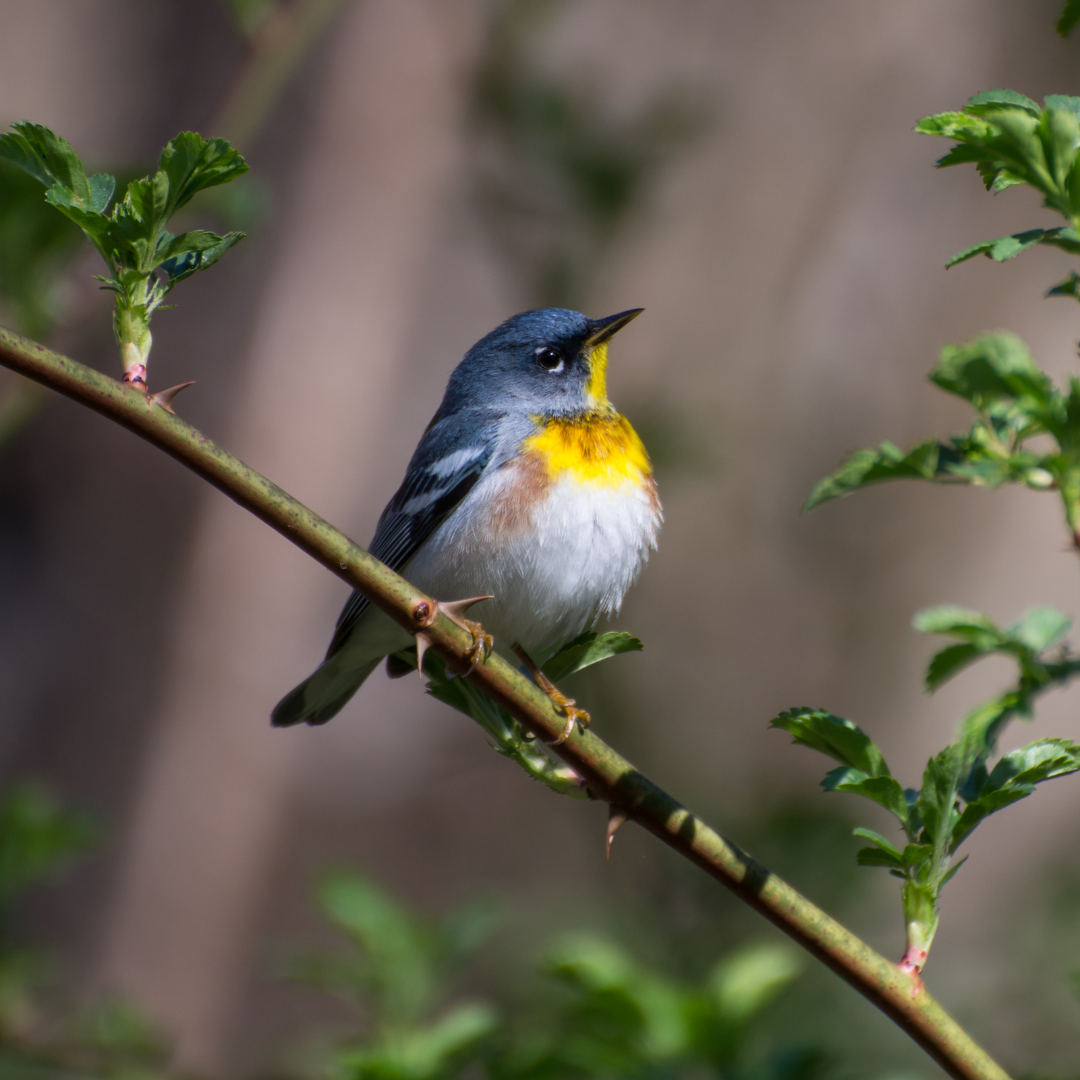
Meet the Tropical Parula: The Vibrant Guardian of Our Coffee Farms
In the verdant landscapes of our coffee farms in Colombia and Peru, amidst the rustling leaves and the sweet aroma of coffee cherries, thrives a tiny yet striking bird—the Tropical Parula. This enchanting creature, with its vivid blue and yellow plumage, plays a pivotal role in the ecosystem of our bird-friendly coffee farms. Let’s delve into the fascinating world of the Tropical Parula and discover its importance to our sustainable coffee cultivation practices.
Habitat and Migration: A Journey Between Continents
The Tropical Parula is a neotropical migrant with a range that spans from the southern United States to northern South America. During the breeding season, it can be found in the woodlands and forests of the southern U.S. and Mexico. As winter approaches, it travels to the warmer climates of South America, finding refuge in the lush habitats provided by our Smithsonian Bird Friendly certified farms in Colombia and Peru. These farms offer the perfect wintering ground for the Parula, with abundant food and shelter.
Diet and Ecological Impact: Nature’s Pest Control
Primarily insectivorous, the Tropical Parula plays a crucial role in controlling insect populations, naturally mitigating pests that could otherwise affect coffee crop health. By feasting on a variety of insects and spiders, it helps maintain the ecological balance, reducing the need for chemical pesticides and supporting our commitment to organic farming practices.
The Melodic Life: Songs from the Canopy
The presence of the Tropical Parula is often made known by its melodious song—a high, buzzing trill that echoes through the coffee plantations. These songs are not just a delightful symphony for the ears but also serve critical communication purposes, such as attracting mates and warding off competitors. The auditory landscape of our farms is greatly enriched by the Parula's vibrant tunes, adding to the serene environment that nurtures our coffee.
Conservation and Sustainability: Protecting Our Feathered Friends
Supporting bird-friendly habitats is more than an environmental commitment; it's a necessity for the conservation of species like the Tropical Parula, which face threats from habitat loss and fragmentation. By choosing our coffee, consumers directly contribute to the protection of these birds' habitats, ensuring they thrive for generations to come.
A Symbol of Harmony and Sustainability
The Tropical Parula is more than just a bird; it's a symbol of the harmony between nature and sustainable agriculture. Its thriving presence on our farms is a testament to the success of our eco-friendly practices that prioritize biodiversity and ecosystem health.
As you enjoy a cup of our sustainably grown coffee, reflect on the vibrant life of the Tropical Parula and the critical role it plays in preserving the natural beauty and health of our planet. Each sip supports not only the livelihood of our farmers but also the conservation of a remarkable bird that makes our coffee farms a true sanctuary.
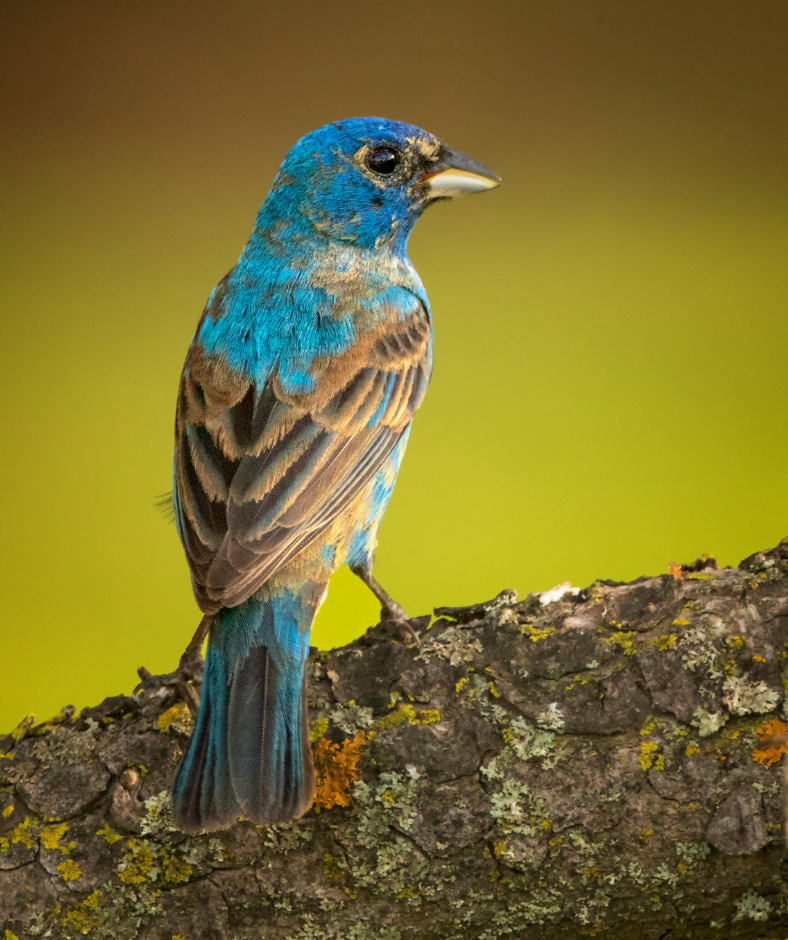
Meet the Indigo Bunting!
As you savor the rich, smooth flavors of your Java Planet coffee, allow us to introduce another dazzling visitor to our coffee farms - the Indigo Bunting. This vibrant bird, with its striking cobalt blue plumage in males and delicate brown tones in females, adds a touch of elegance to the lush landscapes of our bird-friendly certified farms in Colombia and Peru.
Habitat, Migration, and Coffee Farms
The Indigo Bunting is a migratory bird that spends its breeding season in North America, from southern Canada through the eastern United States. During the winter months, these birds travel to Central America, northern South America, and the Caribbean, seeking warm climates and abundant food sources. The shaded canopies and rich biodiversity of our coffee farms in Colombia and Peru provide an ideal winter refuge for these beautiful birds.
Diet and Foraging Habits
Indigo Buntings primarily feed on insects, seeds, and berries. Their diet makes them essential players in the ecosystem, helping to control insect populations and aiding in seed dispersal. By feasting on a variety of pests, they contribute to the natural pest management on our farms, ensuring the health and vitality of our coffee plants without the need for harmful chemicals.
The Bunting's Song
The Indigo Bunting's song is a series of cheerful, musical notes that bring life and vibrancy to our coffee plantations. Male Indigo Buntings are known for their elaborate and melodious singing, which they use to establish territory and attract mates. Their song creates a symphony that enhances the serene ambiance of our farms, making every visit a delightful experience.
Conservation and Significance
The presence of Indigo Buntings on our bird-friendly coffee farms is a testament to our commitment to preserving wildlife and promoting sustainable farming practices. By supporting bird-friendly coffee, you are playing a crucial role in conserving these magnificent creatures and their habitats. Your purchase helps maintain the delicate balance of nature, ensuring that birds like the Indigo Bunting continue to thrive.
A Symbol of Coffee Farm Beauty
The Indigo Bunting represents the harmony between nature and sustainable agriculture. Their vibrant presence on our farms highlights the success of our eco-conscious practices. As you enjoy your Bird Friendly Java Planet coffee, take a moment to appreciate the Indigo Bunting and the vital role it plays in our ecosystem. Each cup you drink supports the preservation of these splendid birds and the beautiful environments they inhabit.
Enjoy your coffee, knowing that you are contributing to a sustainable future for both wildlife and agriculture.
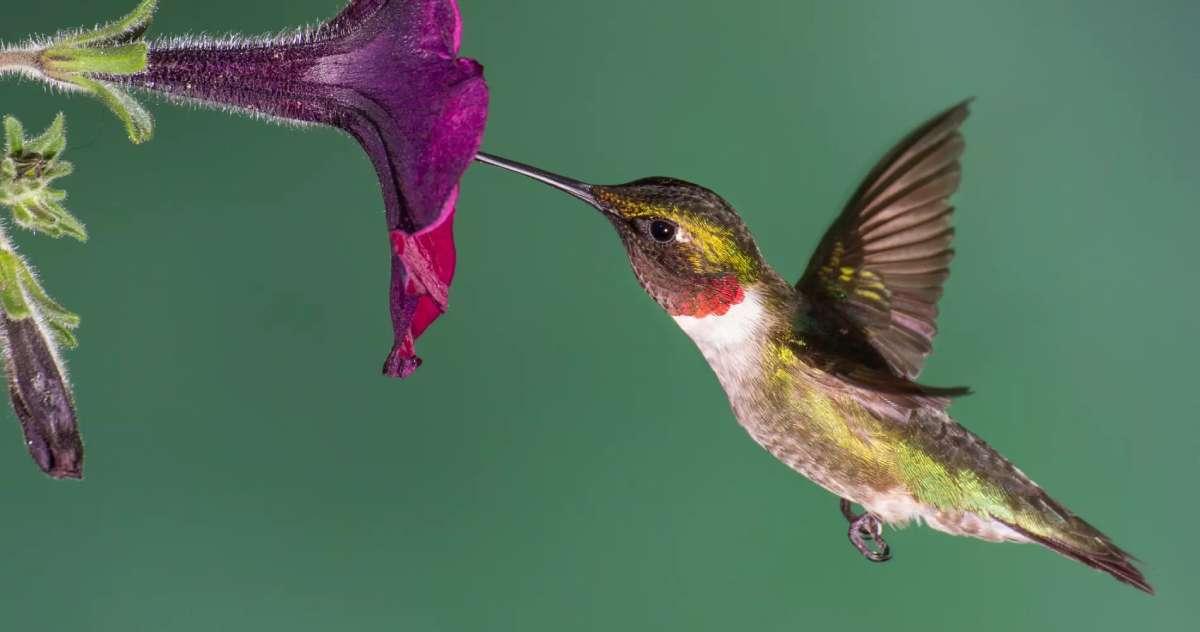
Meet the Ruby-throated Hummingbird!
As you enjoy the rich, smooth taste of your Java Planet coffee, let's take a moment to appreciate one of the most vibrant and captivating visitors to our coffee farms – the Ruby-throated Hummingbird. This tiny bird, with its iridescent emerald feathers and sparkling red throat, brings a touch of magic to coffee farms. Let's explore the fascinating life of this dazzling hummingbird and its special connection to the coffee-growing environment.
Habitat and Behavior
The Ruby-throated Hummingbird, a native of North America, embarks on an extraordinary journey each year, migrating thousands of miles to Central America, where it spends the winter months. Our Bird Friendly Certified coffee farms, with their lush, flower-rich landscapes, provide the perfect home for these hummingbirds during their migration. Flitting between blossoms, these birds are a blur of color and energy, contributing to the vibrant ecosystem of our farms.
Diet and Foraging
This small but mighty bird relies heavily on nectar from flowers as its primary food source, which it supplements with small insects and spiders. The Ruby-throated Hummingbird’s rapid wing beats and hovering ability allow it to access nectar deep within flowers, making it a vital pollinator for many plant species. The diverse flora on Bird Friendly coffee farms not only supports the needs of these hummingbirds but also benefits from their pollination, creating a symbiotic relationship that enhances the health and productivity of our coffee plants.
The Joy of Hummingbird Sightings
Spotting a Ruby-throated Hummingbird is always a delight. Their incredible speed, agility, and the distinctive hum of their wings as they dart from flower to flower make them a captivating sight. Imagine enjoying your morning coffee while watching these tiny jewels hover effortlessly in the air, adding a sense of wonder to your daily routine.
Conservation and Significance
The Ruby-throated Hummingbird, despite its small size, plays a crucial role in the ecosystems it inhabits. However, habitat loss and climate change pose significant threats to their population. By maintaining our commitment to shade-grown, organic coffee farming, we provide a haven for these hummingbirds, ensuring they have the resources they need to thrive during their long migrations.
A Symbol of Nature’s Beauty
The Ruby-throated Hummingbird is more than just a beautiful bird; it symbolizes the delicate balance of nature that we strive to protect through sustainable farming practices. Their presence on Bird Friendly coffee farms is a testament to the health and vibrancy of our environment, and to the positive impact of our farming methods.
As you sip your Java Planet coffee, take a moment to think about the Ruby-throated Hummingbird and the role it plays in our world. Each cup you enjoy supports the preservation of these extraordinary birds and the ecosystems that sustain them.
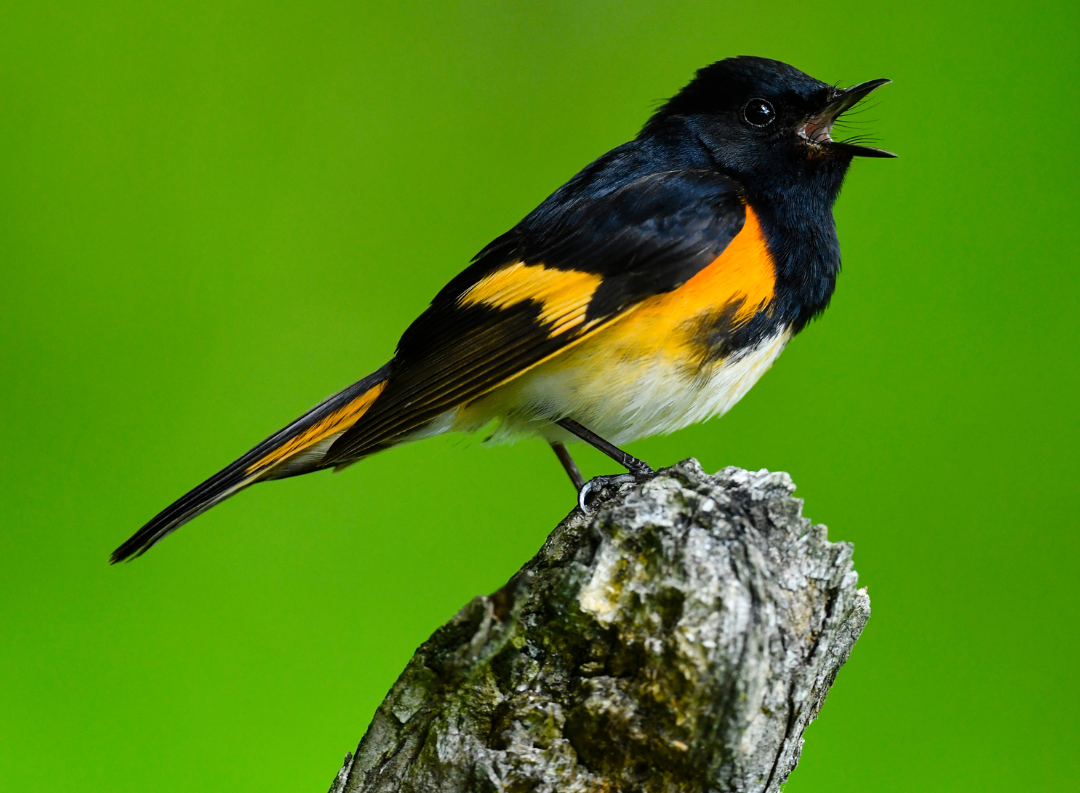
Meet the American Redstart!
As you sip on the rich, smooth flavors of your Java Planet coffee, let’s introduce you to a dazzling visitor to our bird-friendly coffee farms—the American Redstart. With its striking black-and-orange (males) or gray-and-yellow (females) plumage, this small warbler flits energetically among the trees, flashing its vibrant tail feathers like a living ember. Explore the captivating life of the American Redstart, a migratory gem that thrives in the bird-friendly certified coffee farms of Colombia, Guatemala, and Peru.
Habitat, Migration, and Coffee Farms
The American Redstart is a long-distance migrant, spending its breeding season in North America, from southern Canada to the eastern and central United States. These birds favor deciduous forests, where they nest in shrubs and small trees, filling the air with their lively songs.
During the winter months, American Redstarts journey south to Central and South America, where they seek out warm, forested habitats. Our Smithsonian Bird-Friendly coffee farms provide the perfect refuge, offering the lush canopies and diverse insect populations that these warblers rely on.
Diet and Foraging Habits
A natural insectivore, the American Redstart uses an exciting "flush-pursuit" hunting method—flaring its tail and wings to startle insects into motion before swiftly snatching them mid-air. Their diet primarily consists of flies, moths, and beetles, but they also enjoy berries and nectar, especially during migration. By feasting on pests, these birds play a crucial role in maintaining the health of coffee farm ecosystems.
The Redstart’s Song
The cheerful, high-pitched song of the American Redstart is a musical hallmark of summer forests. Males sing a lively series of short, sweet phrases to attract mates and defend their territories. Even in their wintering grounds, they continue their vocal performances, adding a melodic charm to the coffee farms where they reside.
Conservation and Significance
The presence of American Redstarts is a sign of a thriving, balanced environment. As bird-friendly coffee farms protect essential habitats, they help preserve not only this vibrant species but also countless other migratory birds that depend on these forests. By choosing bird-friendly coffee, you support conservation efforts that ensure these stunning songbirds continue their seasonal journeys.
A Symbol of Coffee Farm Harmony
The American Redstart represents the seamless connection between nature and sustainable farming. Its return to our farms each year is a testament to the importance of eco-conscious agricultural practices that benefit both wildlife and coffee lovers.
So, as you enjoy your Bird Friendly Java Planet coffee, picture the American Redstart flitting gracefully among the coffee trees, playing its role in the delicate balance of nature. With every sip, you are helping to protect these brilliant birds and the extraordinary landscapes they call home.
